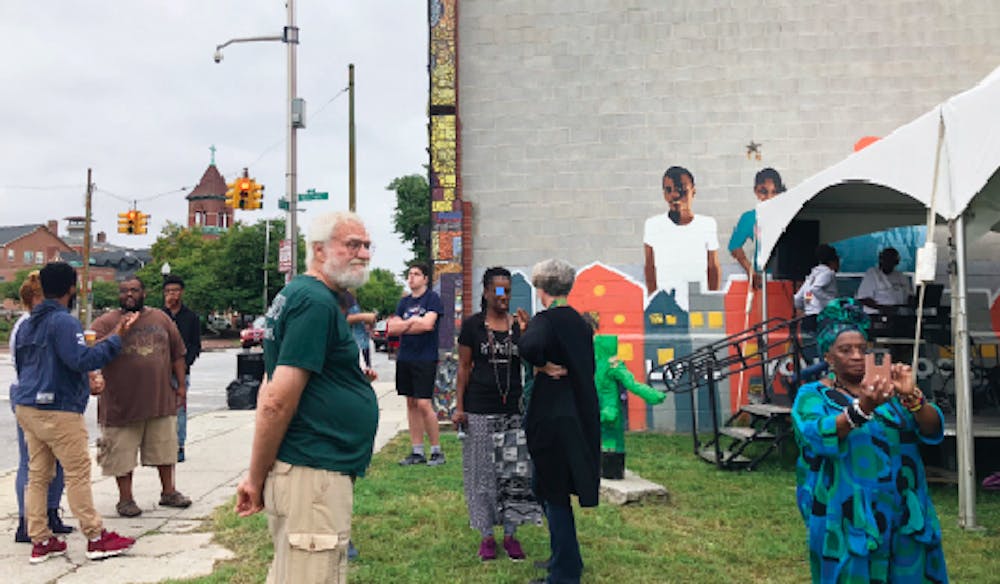Baltimore currently has three state-designated arts and entertainment districts: in Station North, Highlandtown and around the Bromo Tower. However, many community leaders and residents have advocated for the creation of a fourth arts district around Pennsylvania Avenue in West Baltimore that focuses on black art.
Arts districts are specific urban areas which are designed to create centers for cultural consumption. Benefits to an arts district include tax credits for construction or renovation of artistic spaces and the chance to become home to new businesses and cultural events.
Activists are proposing Pennyslvania Avenue as the location for the black arts district due to its historical significance. In the 20th century, Pennyslvania Avenue was a popular location for black artists, particularly jazz musicians.
At The Art of Activism, an event promoting the creation of the district, community residents, artists and activists gathered to celebrate the culture and art from the area. The event, which took place on Sept. 8, was hosted by Leaders of a Beautiful Struggle (LBS).
Established in 2010, LBS is a Baltimore grassroots think tank created to improve the lives of black people. Through youth leadership development and political advocacy, LBS seeks to provide a voice for the city’s black communities.
“Lady” Brion Gill, cultural curator for LBS, has served on Baltimore City Mayor Catherine Pugh’s Safe Arts Task Force. The Task Force seeks to increase access to safe art spaces and activities in the Baltimore area. Gill proposed the creation of the district when she was served on the Mayor’s Task Force.
Gill is working in partnership with the University of Baltimore, Jubilee Arts, Pennsylvania Avenue Main Street and other Baltimore schools and organizations, to establish Mary-
land’s first Black Arts and Entertainment district.
The Art of Activism featured artistic workshops, such as painting and West African dance, and a retrospective panel discussion to reflect on the history of the area.
“We’ve done a lot in Baltimore,” Gill said. “This is one of our newer projects, and hopefully when the arts and entertainment district comes to fruition, it will be housed under LBS.”
Marion Blackwell, a representative from Pennsylvania Avenue Main Street, one of the partner organizations of LBS, explained that Main Street focuses on the redevelopment and revitalization of the main streets of Baltimore.
Blackwell explained that the organization aims to rebuild these communities through bringing in economic development, predominantly through black businesses.
“There were many black businesses in the area, and they basically supported the surrounding communities,” Blackwell said. “Over a number of years, after the riots, the neighborhood went down, and it never did come back up again.”
Blackwell gave the example of a boxing center half a block from the event that is known to produce nationally recognized young boxers.
“The boxing center does a tremendous job of taking boys off the street and teaching them discipline through boxing and many of them are champions,” Blackwell said.
According to Blackwell, Baltimore, alongside Harlem, was a central area of renaissance for “black America.”
However, she explained, achievements by the Baltimore black communities are often overshadowed by negative connotations.
At the start of the event, Nneka Nnamdi, the director of Community Development, began with a libation. Nnamdi described a libation as a simple prayer done in honor and respect in reverence of one’s ancestors.
She stated that this was an event meant for remembrance of ancestors. Nnamdi also stated that this event was a way of looking forward to future redevelopment of black arts in the City.
“For those that we do this work for, this work that we may not see come to fruition; for those who come to us later; those are the people that we want to say thank you to.” Nnamdi said. “We are here for you, we are doing this working to create a better world.”





